This is the perfect recipe for a super easy homemade graham cracker crust. Made with graham cracker crumbs and toasty brown butter, This post walks you through a step by step method of how to make a quick graham cracker crust, and all the tips and tricks for a perfectly shaped crumb crust that holds its shape when used for a pie. This post also includes alternatives to graham crackers!
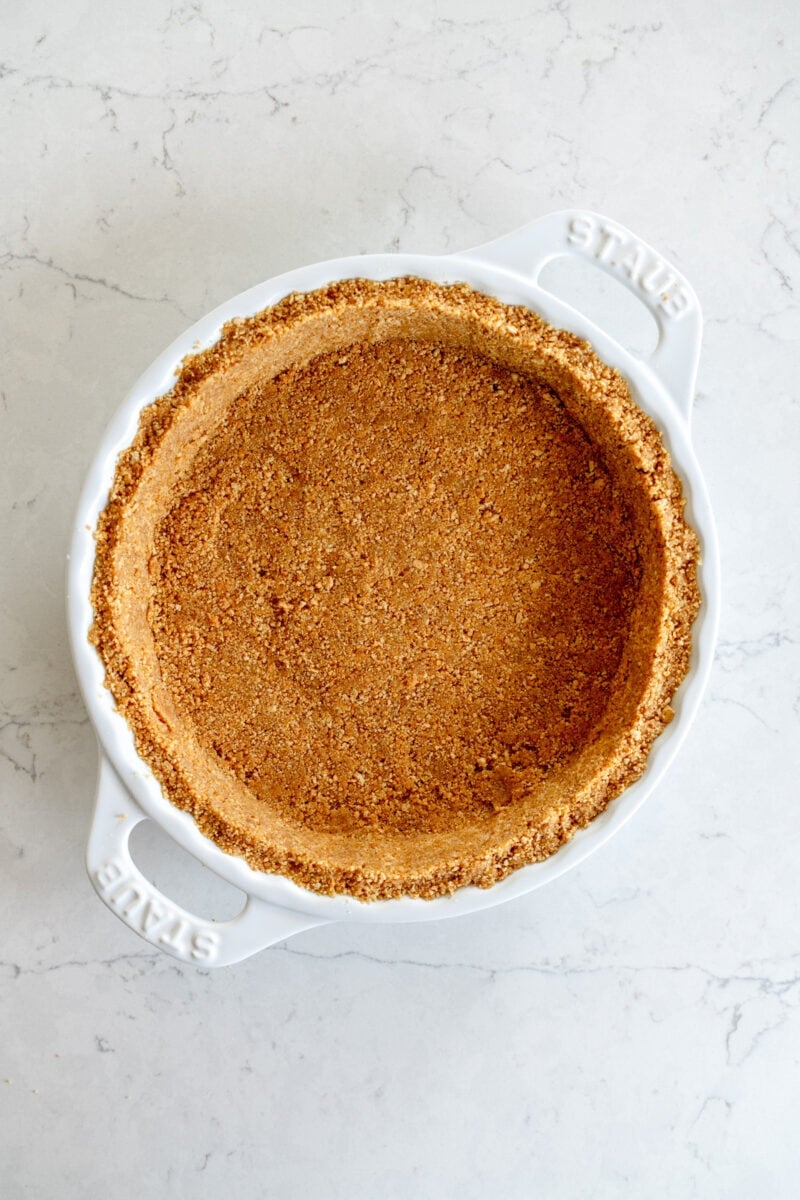
Hi hi! I am just popping in to share this super easy graham cracker pie crust recipe with you!
I love making a crumb crust for pies, and this homemade graham cracker crust is particularly good. It utilises brown butter for a super toasty finish, which gives amazing depth of flavour to whatever recipe you are using it for.
I use this graham cracker crust as the base of my Key Lime Pie and my Lemon pie, but it can be used in a bunch of different formats - it works great as the base of a bar or a cheesecake too.
I have made a bunch of crumb crusts in my time as a baking blogger, and have picked up a couple of tips and tricks along the way on how to get a perfect graham cracker crust that holds its shape that I will share with you!
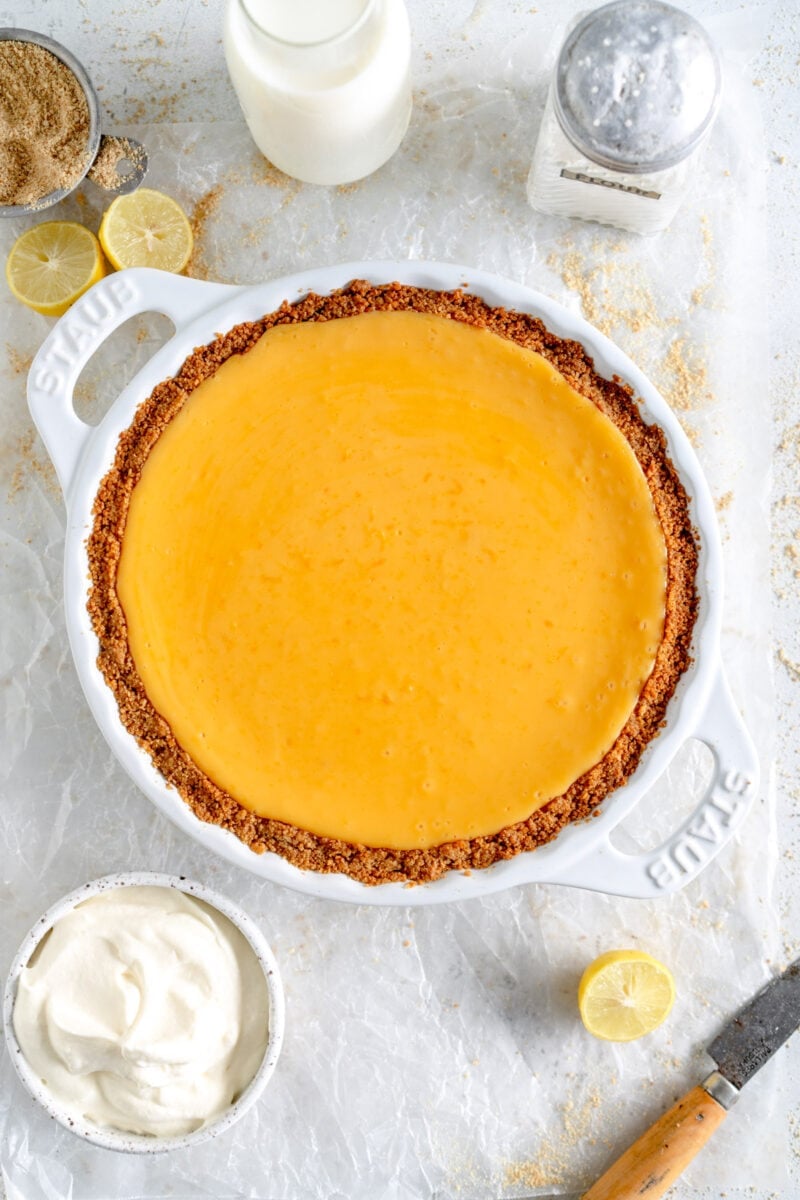
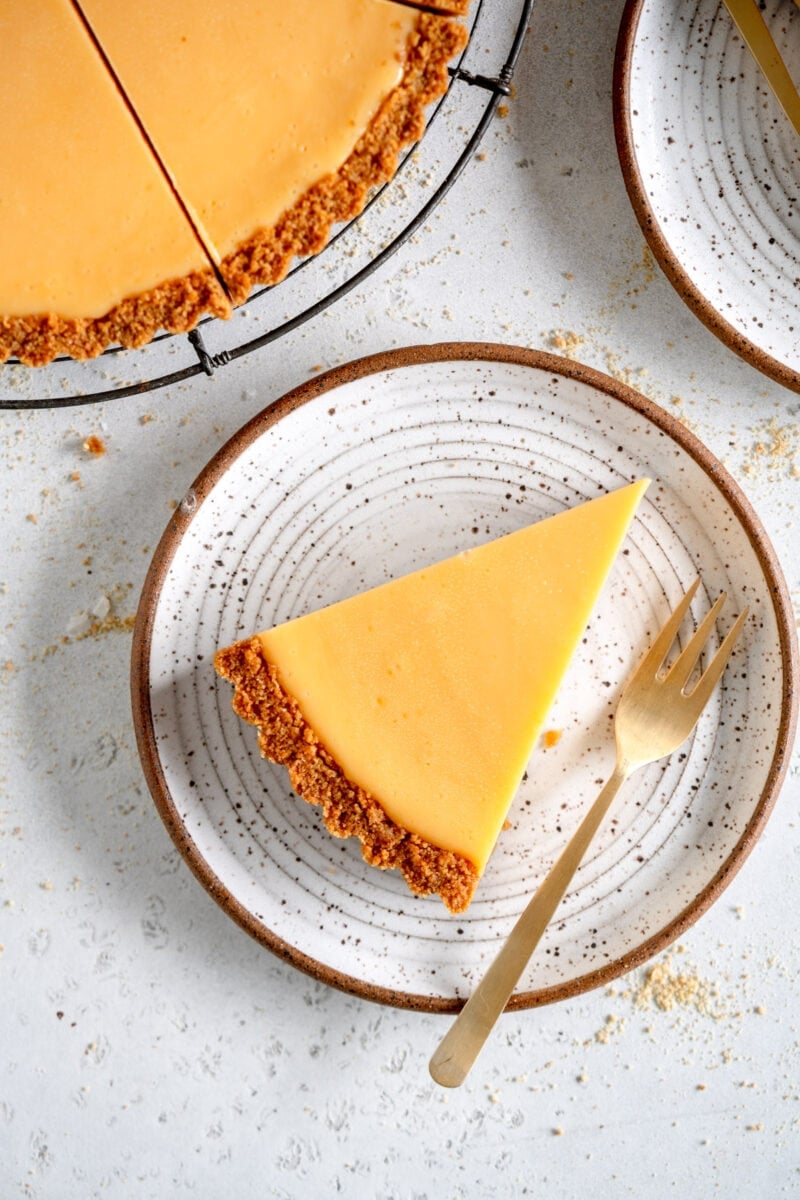
Ingredients in Graham Cracker Crust
The ingredients list in graham cracker crust is super simple:
- Graham Crackers. Gotta have them. There are notes further down the post on what to use if you don't have easy access to graham crackers in your country. I get mine from one of the US stores in New Zealand or get friends to bring them over to me.
- Sugar. I use regular granulated sugar. This helps to act as some glue in the crust to help it to hold together when it bakes.
- Salt. Just a little. I often use salted butter, and if you do you only need a tiny bit of additional salt.
- Butter. This is a situation in which brown butter makes everything better. Browning the butter only takes an extra five minutes, and it is so, so worth it.
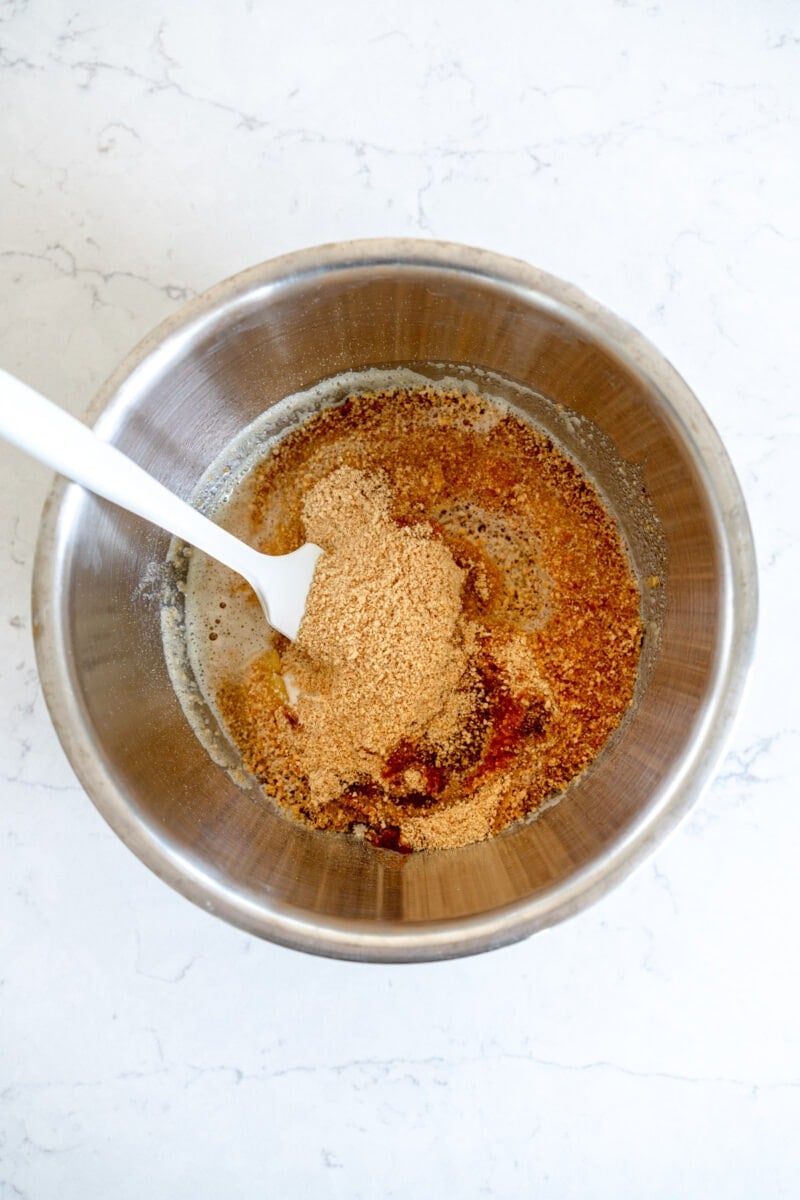
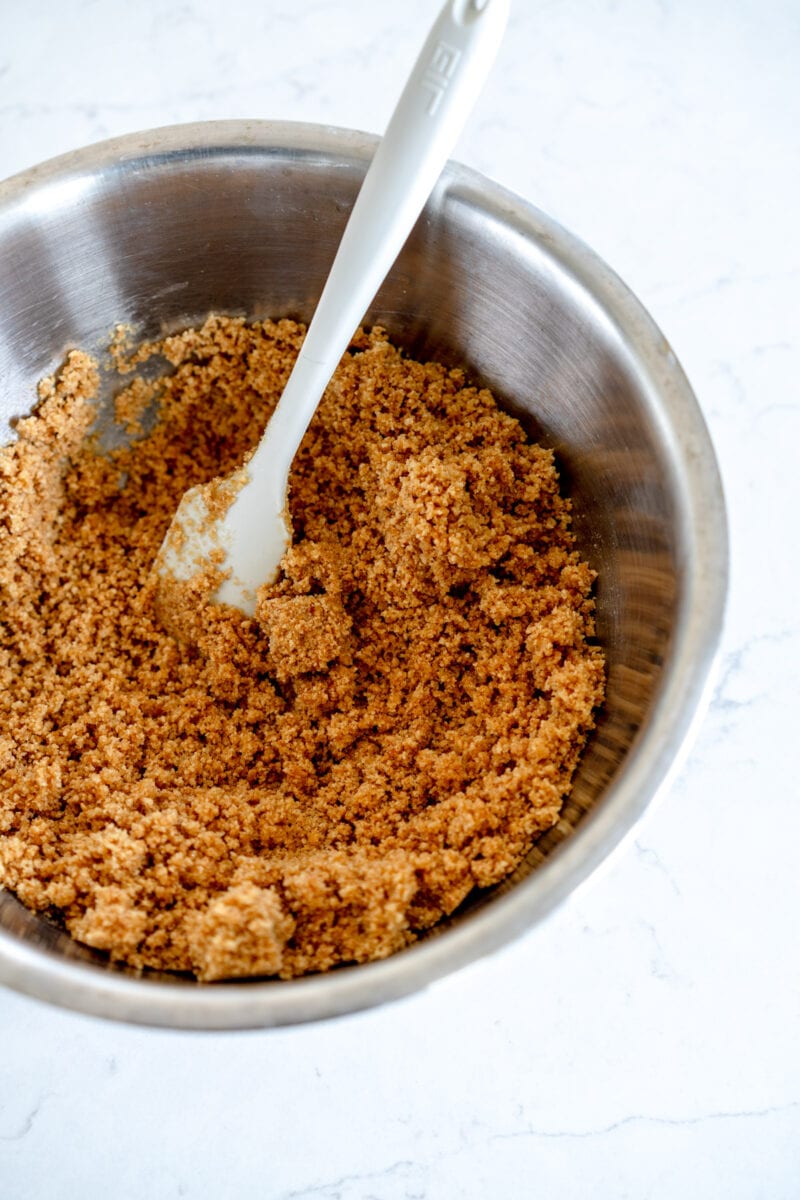
What sized pan does this graham cracker crust fit?
This recipe makes enough graham cracker crust to make a thick 8-inch or 9-inch pie crust, or a slightly thinner 10-inch pie crust. I like to use it in a removable bottom 9-inch tart pan too as it does a great job at sticking to the fluted sides to make a really nice pattern.
This recipe can also be used to line a 9-inch springform pan, or the base of a 9-inch square pan.
Can Graham Cracker Crust be made ahead of time?
Yes - this crust is great to make ahead of time. I have tested storing it for up to 24 hours in the fridge before using.
Bake the crust as directed, then leave to cool completely, then transfer to the fridge until ready to use. I leave mine uncovered but you can cover yours if you like.
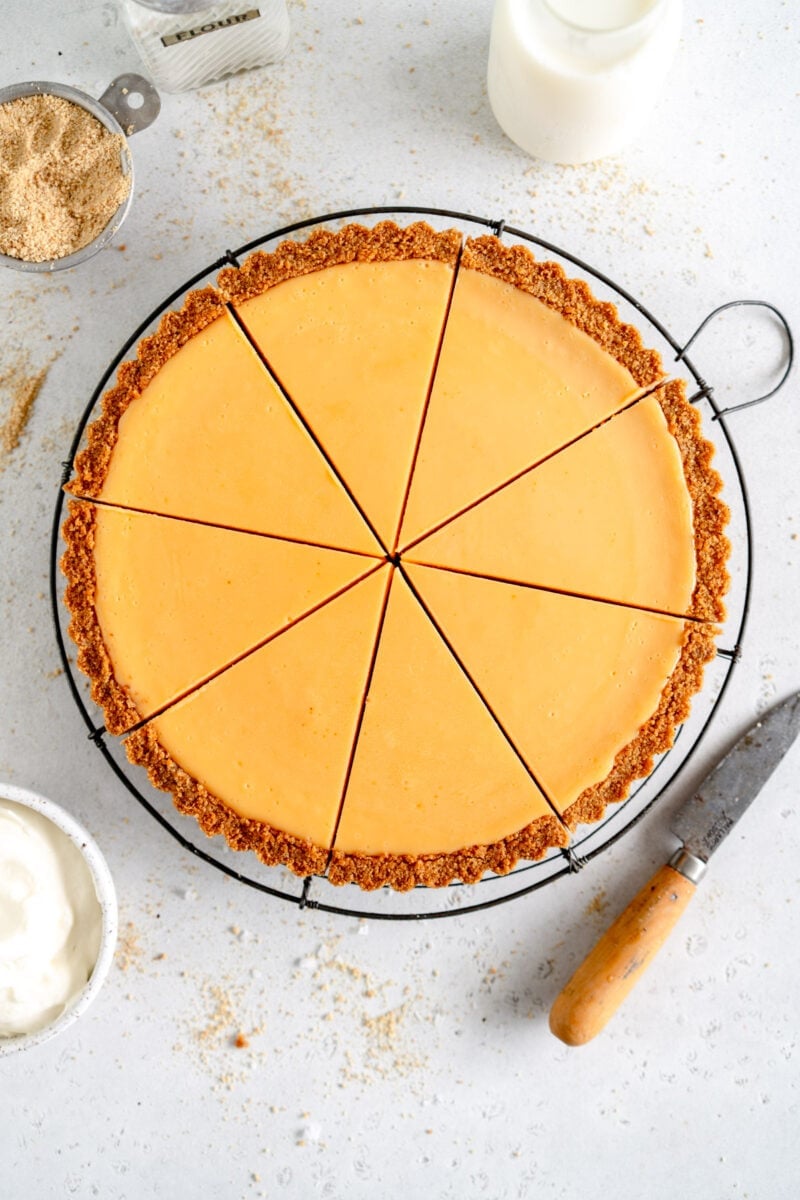
What is the best pan to use for graham cracker crust?
I am a metal pie pan girl when it comes to making a pie with a classic pastry crust, but for a crumb crust like this graham cracker crust or my oreo pie crust, I highly recommend a ceramic pan. Metal pans can be a little too slippery and the crust can slip down the sides. This crust works great in a metal tart pan, but tart pans have much straighter sides than a sloped pie pan.
I tested this recipe in my go-to non stick pan and the crust fully slumped down to the bottom of the pan. I have had the best success using this crust either in a ceramic pan or a tart pan (or it works great in a square pan too).
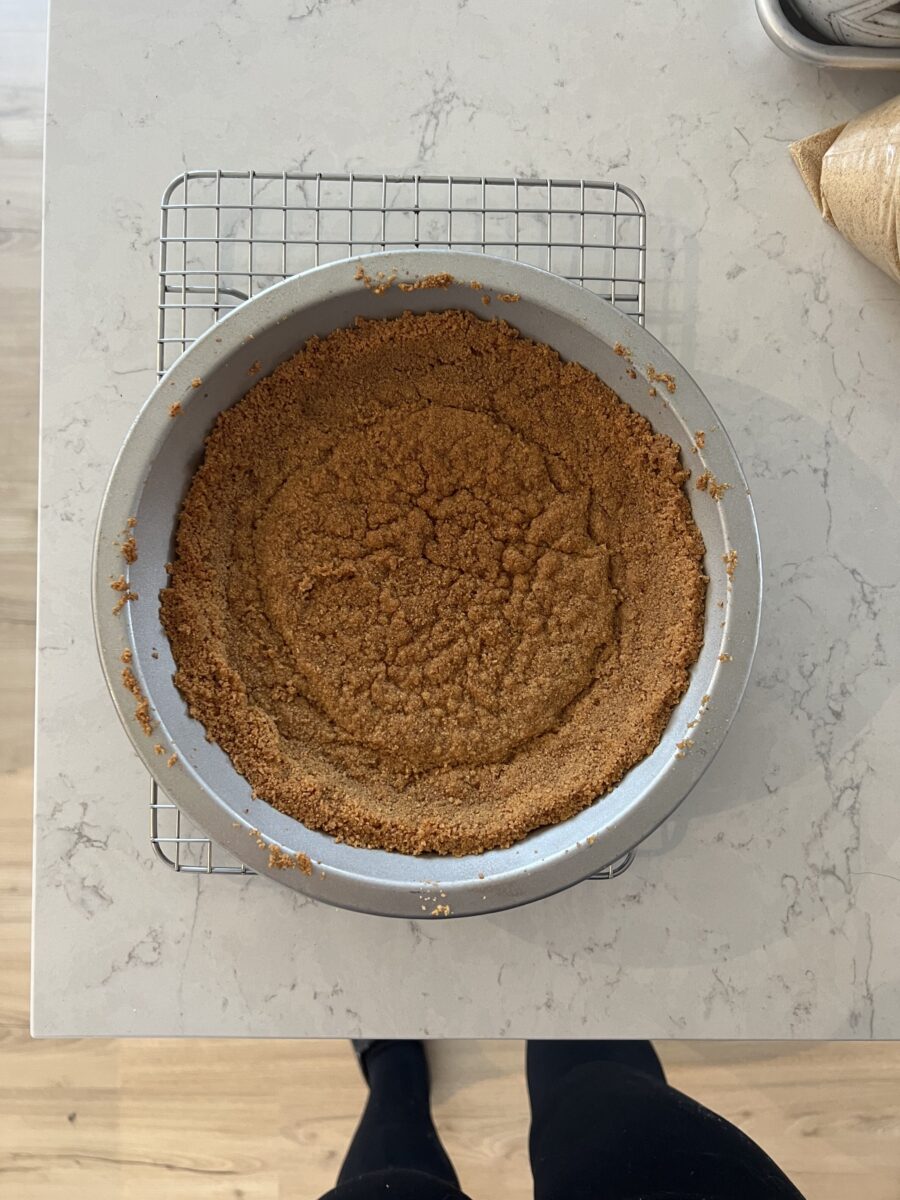
Graham Cracker Alternatives
This is one of the most common questions I get asked - what can I use instead of graham crackers?
I tested this recipe using digestive biscuits and it worked great. You just need to reduce the butter quantity down to 75g of brown butter in order to account for the fact that digestives aren't as absorbent as graham crackers. You will need to add an extra 2-3 minutes onto the bake time too.
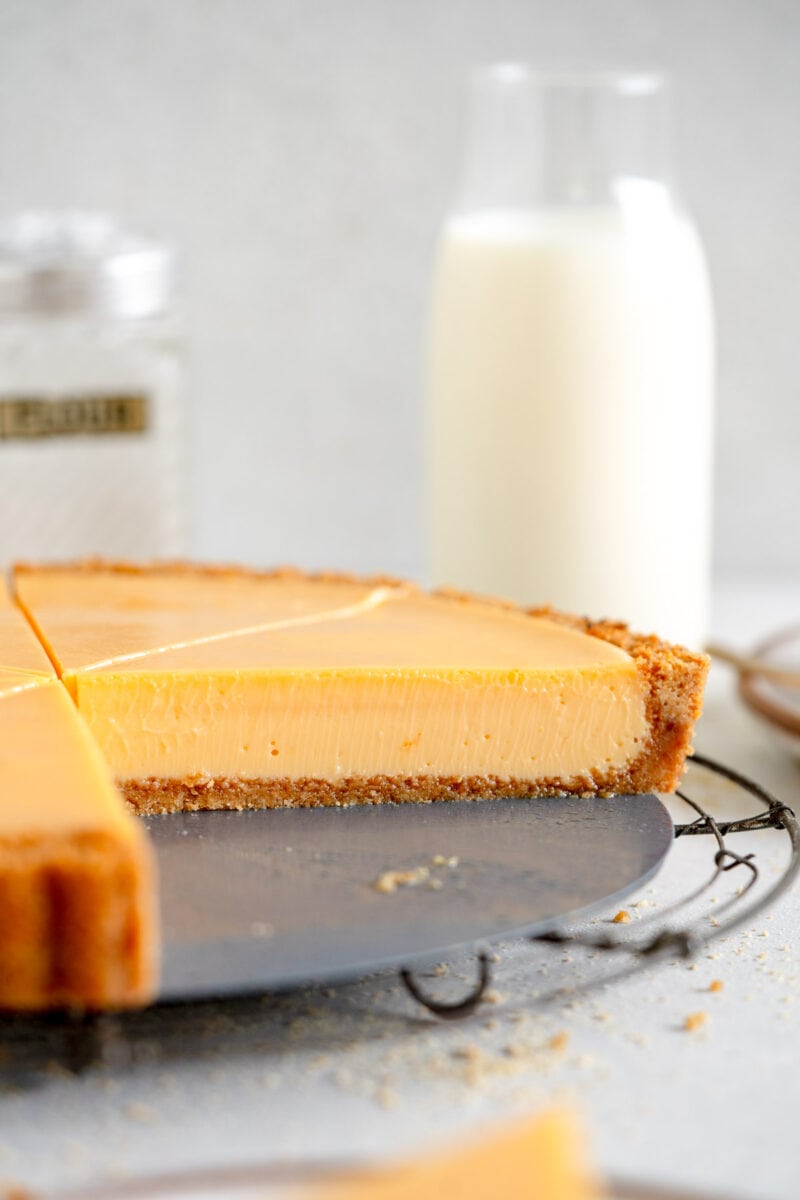
How to shape a graham cracker crust.
I have made many graham cracker crusts before, and have found that the easiest way to get a nice even crust is to start with the sides. You can either dump all the crust in at once and go for it, or I find it much easier to weigh out some of the crust and then form the sides first, before adding the rest of the crust to form the bottom.
Depending on the pan that you use the crust will be thicker or thinner, so adjust the amount you use for the sides if needed.
The great thing about making a graham cracker crust is that you can work at it as much as you like - if you find that you aren't happy with how it is coming out, just transfer the crumbs back into the bowl and start again.
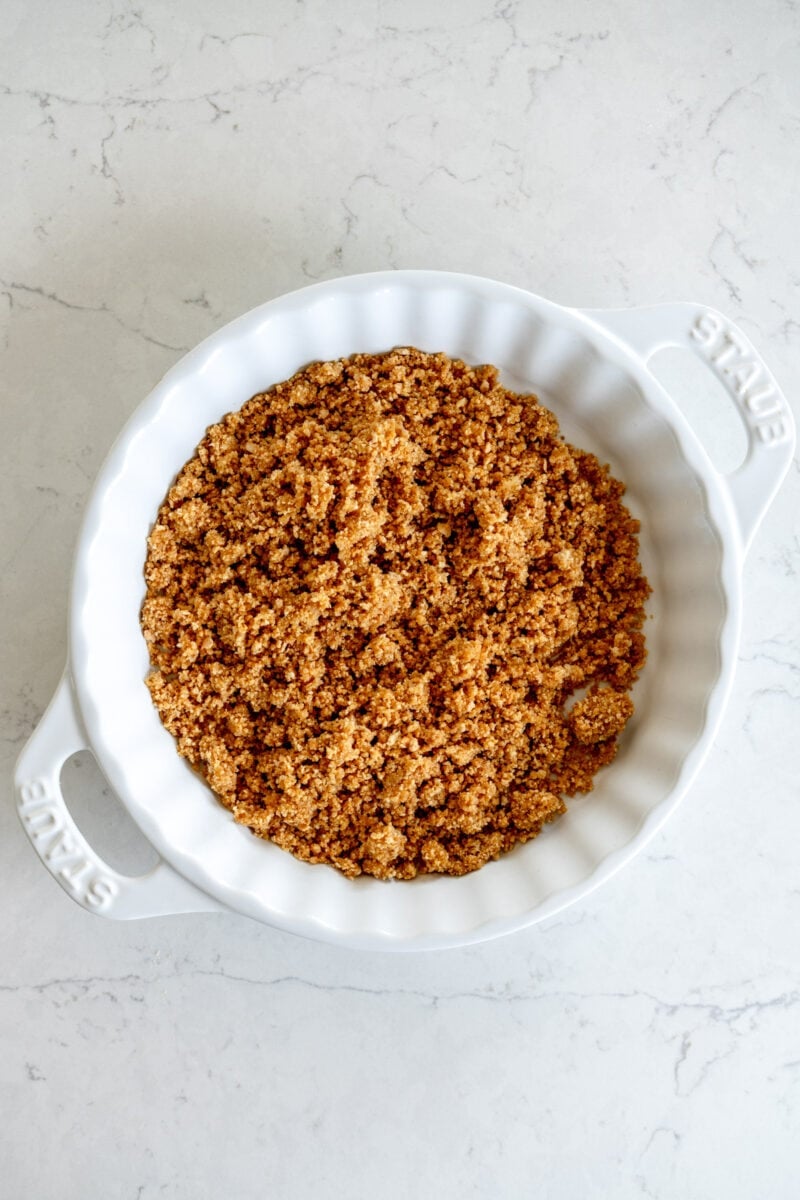
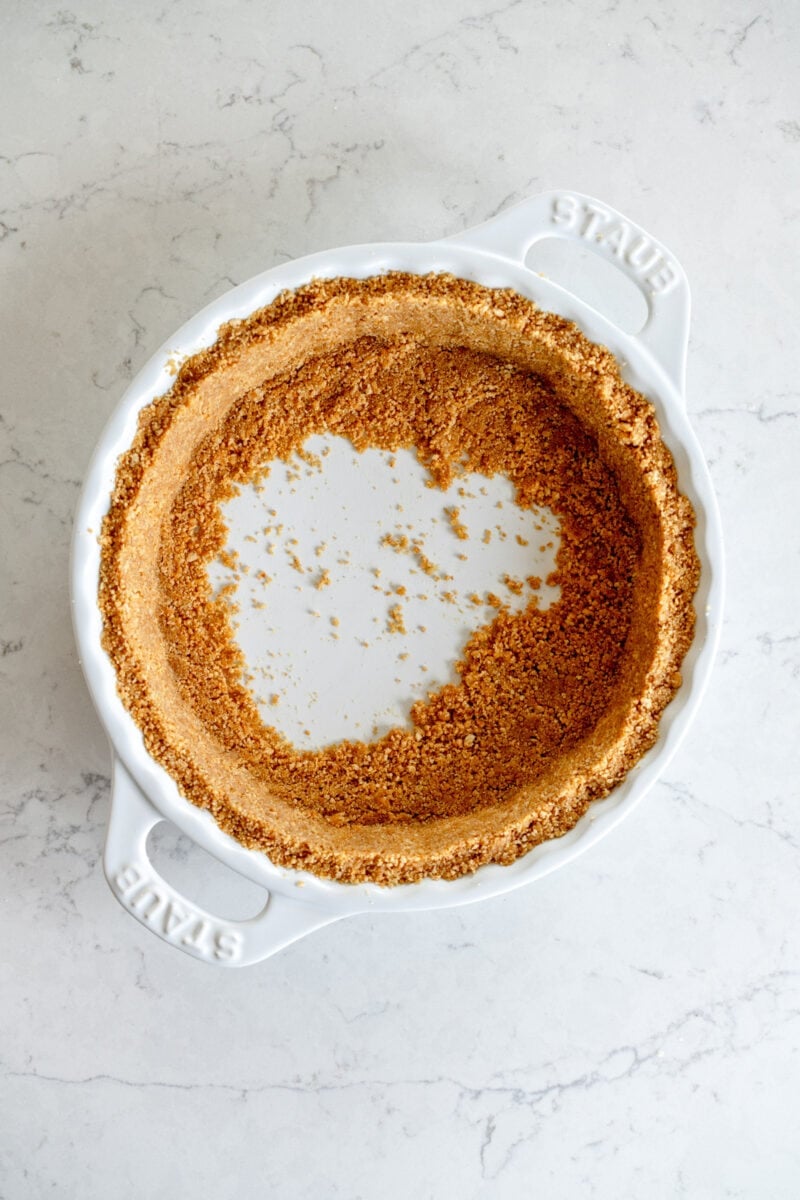
Flatten things down.
Another good little tip when making a graham cracker crust is to use something nice and flat. I like to use either a flat bottomed measuring cup (my good friend the ⅓ cup, if you've been here a while you will know she is my favourite for a crumb crust), or you can use a drinking glass or something similar. Make sure that the crust is nice and compacted in the pan to reduce crumbling. I also have a wooden tamper which is helpful to use.
I like to use the thumb or finger on my opposite hand to help shape the top edge of the crust - I push down lightly to stop it from rising too much up the sides of the pan and to keep everything nice and flat and tidy.
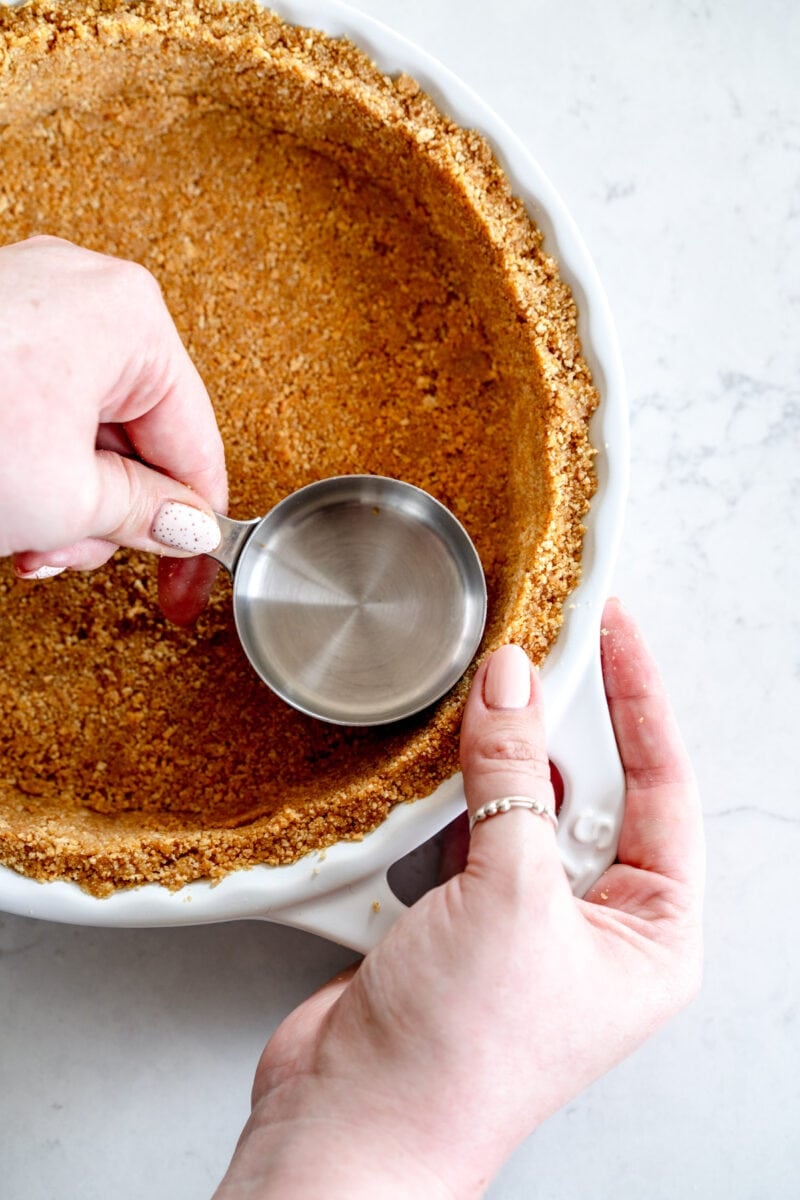
The ideal consistency for a sturdy graham cracker crust - wet sand.
Not all graham crackers have the same level of absorbency, so you may need to adjust the amount of butter that you use in the recipe.
The amount I call for in the recipe generally works, but as I haven't been able to test with every brand of graham cracker out there, you may need to just keep an eye on things.
You are aiming for the consistency to be like wet sand - if you see in the image below, when you squeeze some of the crust mixture together, it should hold its shape.
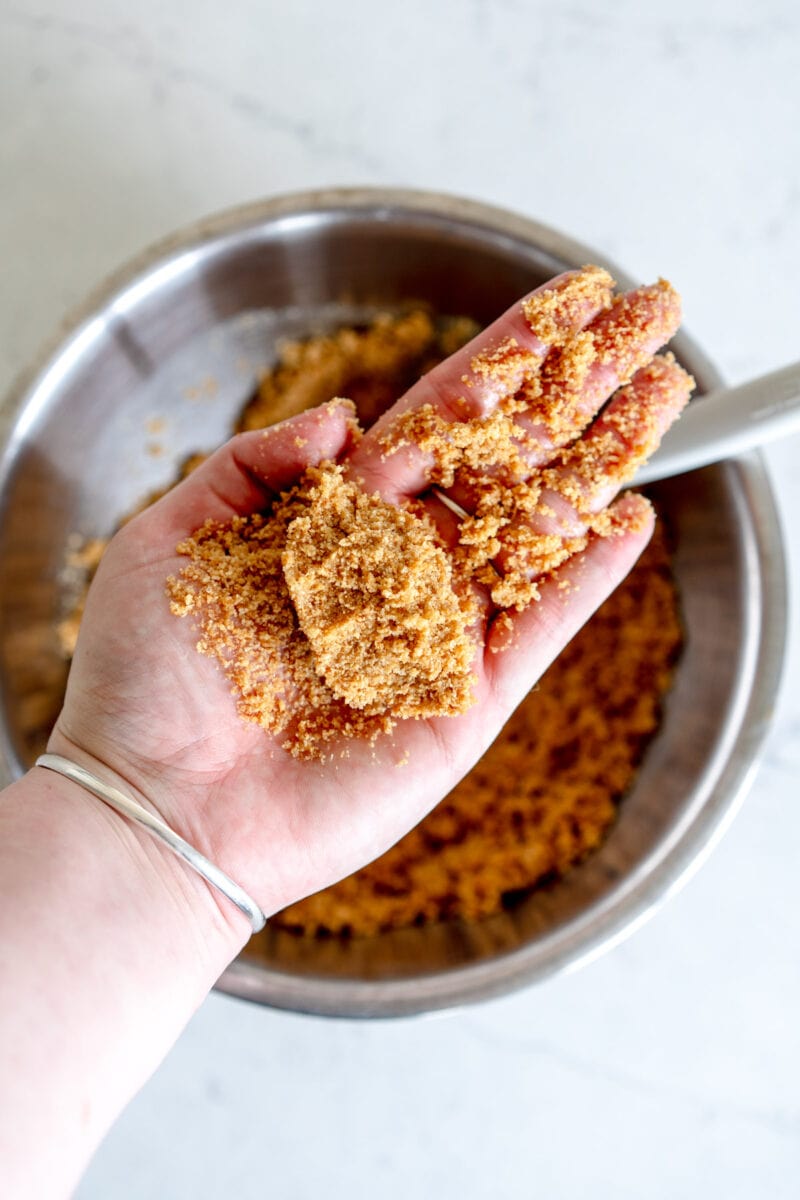
Why are there two quantities of butter in the recipe?
You will notice that there are two different quantities of butter in the recipe - the initial quantity (125g) in the ingredients list, then a smaller measure of brown butter within the body of the recipe.
Different butters have different moisture levels, which affects the yield of brown butter. American style butter has a higher water content, so will produce less brown butter when the water is cooked off. European or New Zealand-style butter, which is higher in fat than American butter, will have less water that needs cooking off, so you will end up with a higher yield of brown butter.
Because of this, the most accurate way to measure this is with a scale. I have accounted for the loss in moisture when calculating the initial quantity of butter to use in the recipe.
Do I have to brown the butter?
No - if you don't want to brown the butter you can just use 95g melted butter in the recipe and skip the browning step.
What wooden tool do you use for the crust?
I use a tamper - a drinking glass or measuring cup will work great too! Just make sure you have a nice seal between the edges and bottom of the crust.
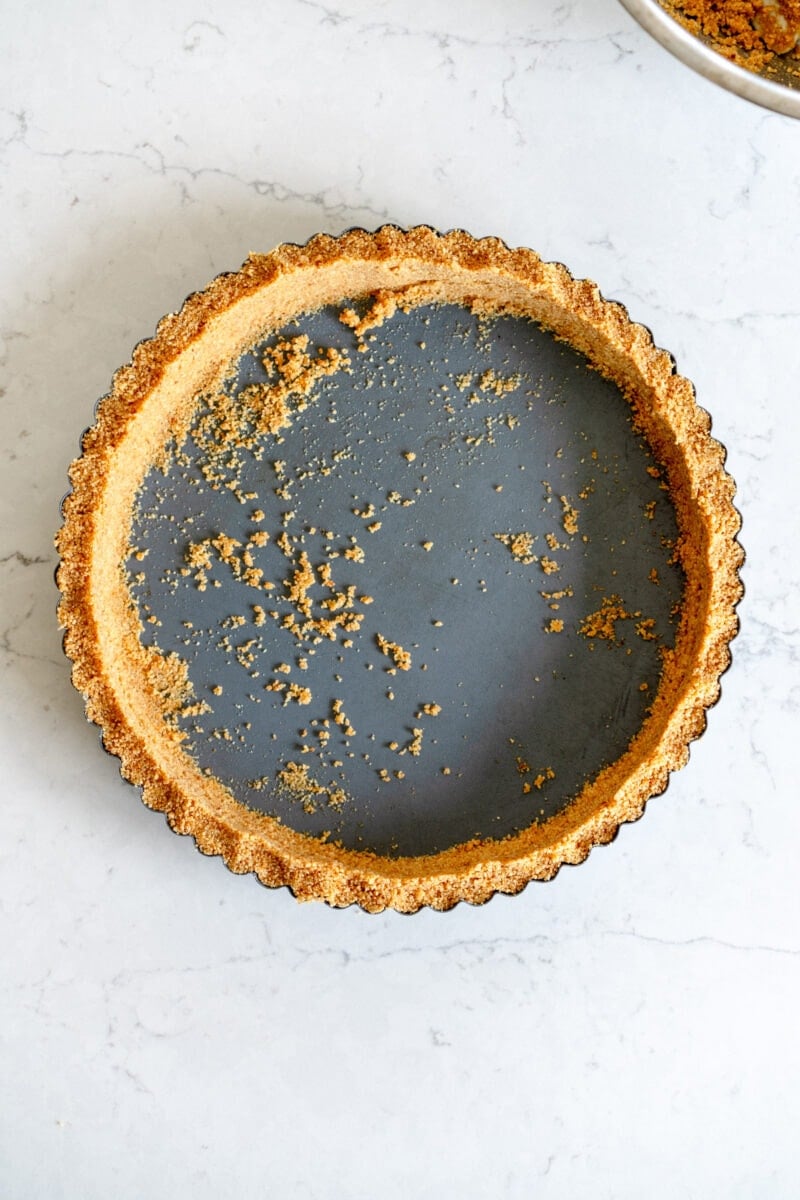
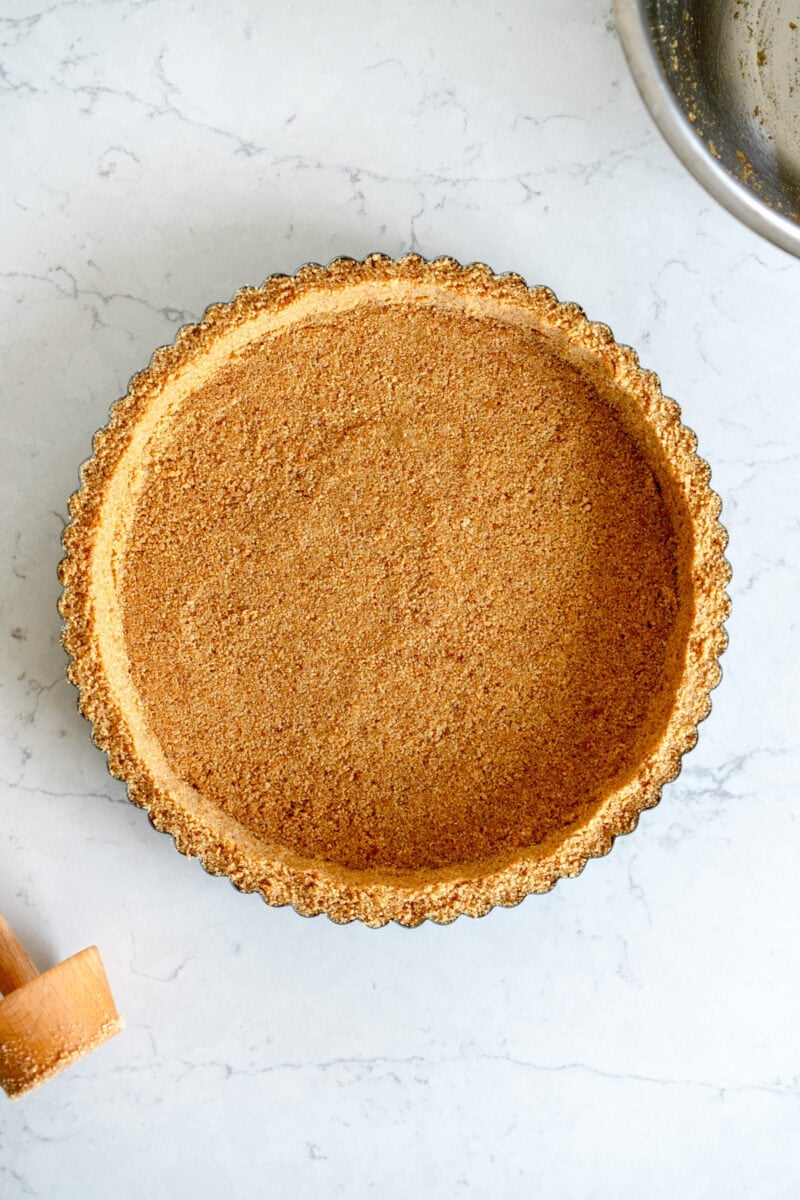
For more homemade pie recipes, check out:
❤️ Made this recipe and love it? ❤️
I would LOVE for you to leave me a review and star rating below to let me know how you liked it! Also, please make sure to tag me on Instagram!
Answers to your baking questions
Over the years, many of you have asked me questions about:
- baking in grams
- adjusting oven temperatures
- what kind of salt to use
- and many more!
I've curated and answered them all for your easy reference in this frequently asked questions post!
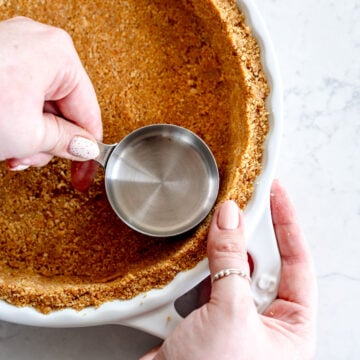
20 Minute Brown Butter Graham Cracker Crust
- Prep Time: 10 minutes
- Cook Time: 10 minutes
- Total Time: 20 minutes
- Yield: One Pie Crust
- Category: Pie
- Method: Baking
- Cuisine: American
Description
This is the perfect recipe for a super easy homemade graham cracker crust. Made with graham cracker crumbs and toasty brown butter, This post walks you through a step by step method of how to make a quick graham cracker crust, and all the tips and tricks for a perfectly shaped crumb crust that holds its shape when used for a pie. This post also includes alternatives to graham crackers!
Ingredients
- 180g graham crackers, processed into fine crumbs
- 20g granulated sugar
- Pinch of salt
- 125g unsalted butter, cold from the fridge is fine.
Instructions
- Preheat the oven to 350°f / 180°c.
- Combine the graham crackers, sugar, and salt in a medium bowl.
- Place the butter in a medium saucepan, and place over medium heat. Cook until the butter has melted, and then continue to cook, swirling the pan often and stirring with a whisk, until the butter foams and turns golden brown and nutty - this should take 3-4 minutes.
- Weigh out 95g (see Notes section below) of the brown butter into the sugar and graham cracker mixture.
- Stir with a spatula to combine. The texture should resemble wet sand. Some graham crackers are more or less absorbent than others so adjust the butter as needed.
- Place 160g of the crust mixture into the pan you are using - this quantity will be used to build the sides of your crust.
- Pat the crust mixture onto the sides of the pan, then use a straight sided measuring cup or drinking glass to help press it evenly against the edges of the pan. You want to make it nice and compact. You can use the fingers or thumb on the other hand to help keep a nice even top edge on your crust.
- Add the remainder of the crust mixture and spread evenly over the bottom of the pie pan, then compact down with whatever flat tool you are using. Make sure that there is a good join between the edges and sides of the crust - if needed, use your fingers to make sure that it is all well sealed.
- Bake the graham cracker crust for 10 minutes, until golden brown and set. If you are using this crust for a no-bake pie recipe, bake for a further 2-3 minutes until nicely golden. If you are baking the crust again for a recipe like lemon pie or key lime pie, remember the crust will bake again when you bake the filling, so remove from the oven when it is lightly golden brown.
- Use immediately in recipe, or store until ready to use.
Notes
You will notice that there are two quantities of butter in the recipe - the initial quantity of butter, then a second measurement in the method which is the quantity of brown butter. The larger initial quantity is to account for water loss when browning - read more about that in my FAQ.
See body of post for alternatives to graham crackers.


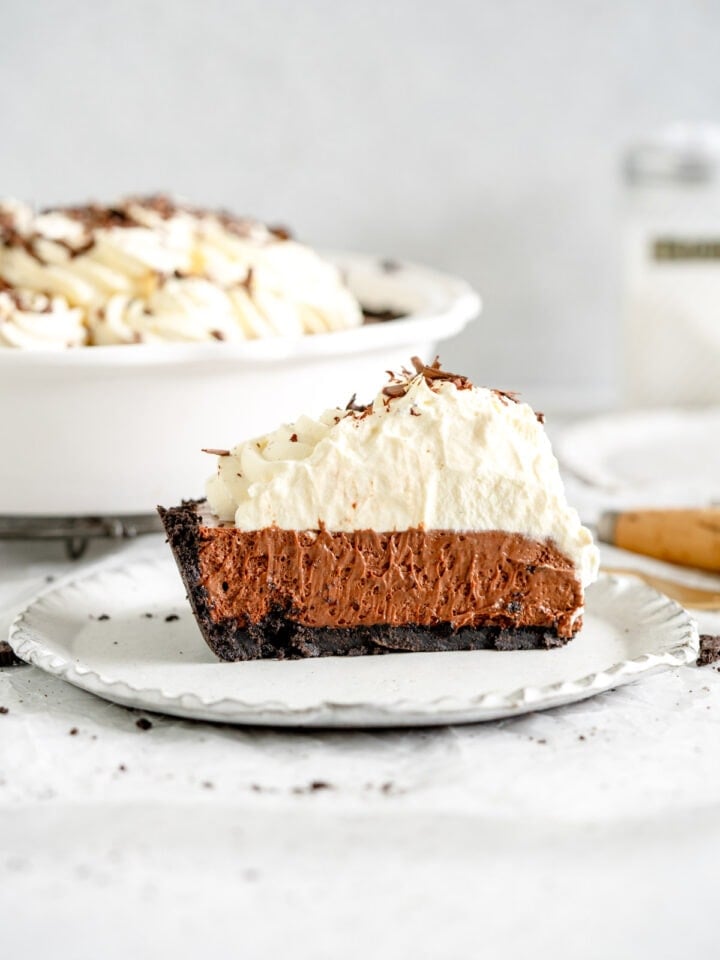
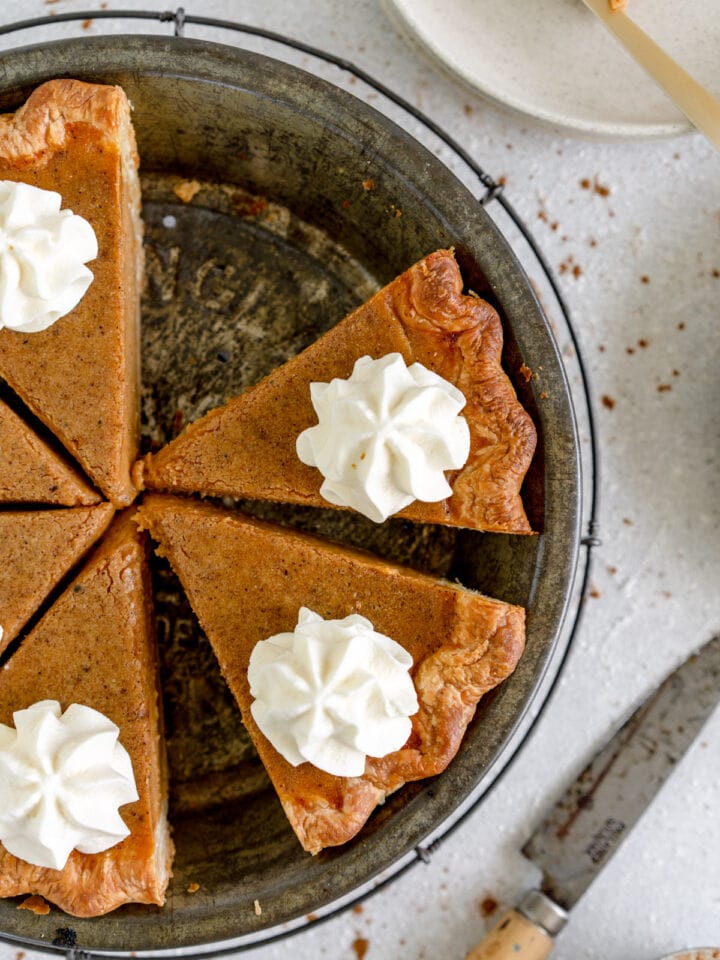
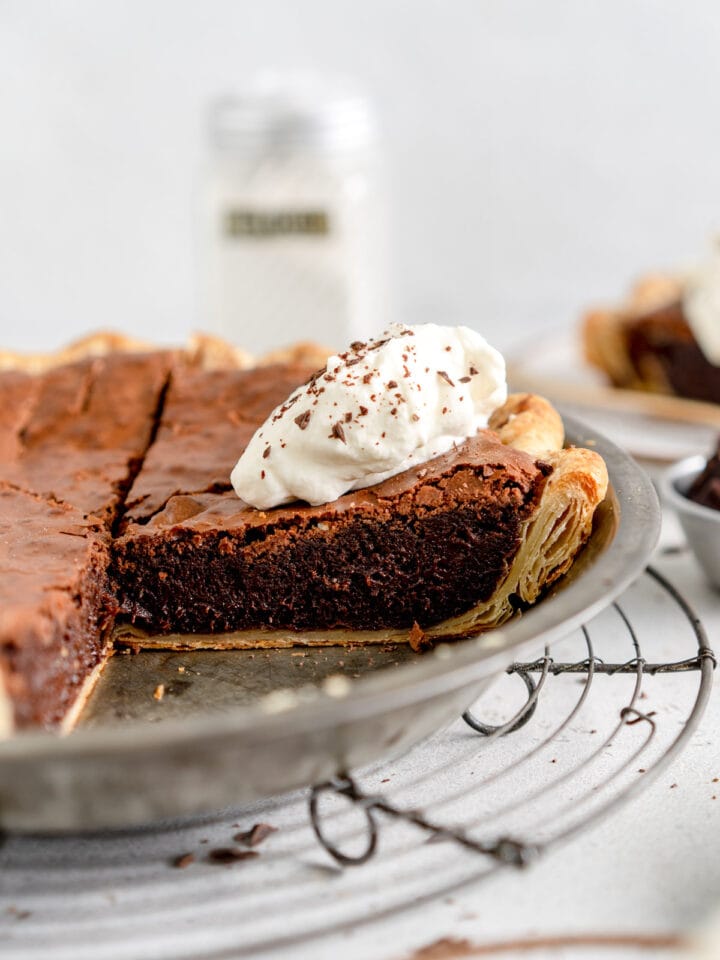
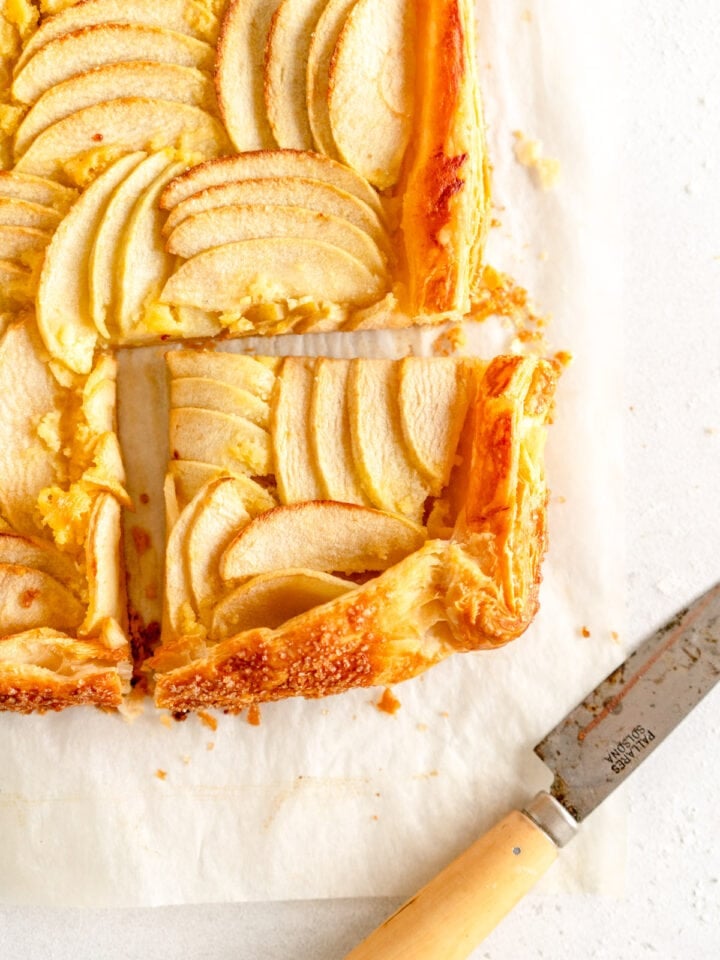
Comments
stacy says
Thank you for giving us the quantity for the sides of the pie. This is incredibly helpful!!
Caribou says
My new go to crust 🙂
Taylor Abbey says
Paired perfectly with the lemon pie. Quick and easy and nutty to go with the sweetness and tartness of the lemon was perfection! It’s not often that someone complements the crust!
EM says
WOW. This recipe has forever changed a family recipe.
I typically buy a pre made graham cracker crust but the store was out so I bought graham crackers and immediately came here for a recipe. I knew I could trust it for a thanksgiving day on the fly change of plans. The recipe was easy to follow even in a busy kitchen, I loved the idea of doing the sides of the crust first. So clever!
Everyone agreed the brown butter added a depth to the pie we didn’t know it needed. Thank you!
Jas Ng says
Love this!It's delicious and so easy to make. Question. If i bake this in a ceramic pie pan, how do u remove the crust so perfectly from a pan without a removable base?
Erin Clarkson says
Once you get the first slice out it's not too bad!
Gabrielle Bryant says
Perfect crust!! Thanks for the tip about forming the sides first!! It worked perfectly!!
Erin says
Do you grease your pans for pie crust?
Erin Clarkson says
I don't - there's enough butter in the crust!
Jess says
Lovely recipe! I'm planning to prepare the tart crust ahead of time before my party 2 days later. Would you advise for me to prepare the tart crust, bake, then store it in the refrigerator before taking it out 2 days later and adding my non-baked filling, or to prepare the tart crust, store it in the refrigerator and only bake it 2 days later right before my party? Just wondering what's the best way to keep it fresh, while maintaining it's texture for my party. (I'm planning to top it with some lemon curd/ choc custard)
Cheers!
Erin Clarkson says
Hi! I would bake it and then store in the fridge in an airtight container until you are ready to use 🙂
Nicole says
Delicious crust and helpful instructions! Thank you! I had to use digestive biscuits as graham crackers aren't available here but the modifications mentioned in the recipe worked great! Excited to make it again.
Lene says
I can tell my crust is already too crumbly - Ive used digestive(in NZ) and are going to make the lemon pie -n used 80g butter to 180g crackers - but after baking it's quite crumbly - can I fix it now ? or just continue with the lemon filling ?
Erin Clarkson says
Hi! So sorry that I missed this - how did it turn out? You want the mix to feel like wet sand
Lene says
It was a little crumbly, but all the women at squash interclub absolutely loved it 😍
Amanda Paa says
Turned out great! The brown butter totally elevates it.
Layne says
So I haven’t tried this crust, but have the perfect (regional) recipe for you to try. It’s called Butterfinger Pie. You crush up as much Butterfinger candy bars (the more the better in my opinion) and mix it into softened vanilla ice cream. Then pour it into a graham cracker crust, top with whipped cream and additional Butterfinger pieces and freeze again until hard (overnight). My friends who aren’t from my area always ask for this and it is so simple but so delicious Next time I make it, I will absolutely use this recipe for the crust.
Erin Clarkson says
Oh yum! We don't get butterfingers in NZ!
Emily says
Hi! I want to use this crust in addition to your lemon pie recipe. However, I was wondering if I could instead use this recipe to make mini individual lemon pies in cupcake pans. Do you have any idea how it would affect the baking time, or if this is even possible using this recipe? I'm making this to share and it would be a lot easier if they were in smaller portions. Thank you!
Erin Clarkson says
Hi, yes you should be able to but I haven't tried it sorry! Getting them out of the muffin pans will be the main issue - make sure that you line the pan properly with something to help you remove them!